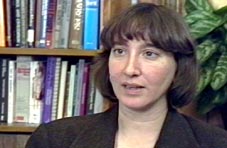 |
|
|
Videos
PO Box 2480Nevada City, CA 95959
Phone/Fax: 800-345-5530
(530-477-0701 outside US and Canada)
Email: info@cavalcadeproductions.com
 A Video Series on Substance Abuse Treatment:
A Video Series on Substance Abuse Treatment:
Trauma and Substance Abuse
Clinical studies of patients in substance abuse treatment programs have shown a high correlation with a client history of trauma. The schism between the trauma and substance abuse treatment fields has meant that patients have been forced to bounce back and forth between PTSD and substance abuse treatment programs, and often are viewed as poor-prognosis. Now, however, model programs are being developed that seek to treat these problems in an integrated fashion. This video series describes the special trauma and substance abuse treatment issues that this dual diagnosis presents. Four survivors of child abuse and/or combat relate how trauma and substance abuse have impacted their lives. Released 1998. Trauma and Substance Abuse I: Therapeutic Approaches Trauma and Substance Abuse II: Special Treatment Issues Purchase price: One VHS/DVD $150, both $250 Also available: Numbing the Pain (#255, 30 min.) Customers who bought this video series also bought: About the Presenters Lisa M. Najavits, PhD is Assistant Professor of Psychology at Harvard Medical School, and is Principal Investigator for two National Institute on Drug Abuse studies on women with PTSD and substance abuse. In 1997 she received the Chaim Danieli Young Professional Award from the International Society for Traumatic Stress Studies. Francis Abueg, PhD, is Director of the Trauma and Addictions Clinic in Los Altos, CA, teaches at Stanford Medical School, and was formerly staff psychologist and clinical researcher at the National Center for PTSD at the VA Hospital in Palo Alto. In 1989, he founded the nation’s first inpatient program devoted to PTSD and substance abuse in war veterans. Pamela Jean Brown, PhD, is Assistant Professor in the Department of Psychiatry and Human Behavior at Brown University, and a clinical psychologist in private practice. Bonnie S. Dansky, PhD, is Assistant Professor in the Department of Psychiatry and Behavioral Sciences at the Medical University of South Carolina, where she is Director of the Evening Recovery Program. Terence M. Keane, PhD, is Professor and Vice Chairman of Psychiatry at the Boston University School of Medicine, and Director of the National Center for PTSD at the Boston VA Medical Center. John Lovern, PhD, is a clinical psychologist in private practice in Orange, CA. He has worked in the chemical dependency field since 1975, and has actively treated dissociative disorders since 1988. Colin A. Ross, MD, provides treatment for dissociative identity disorder and related trauma disorders at Timberlawn Mental Health System in Dallas, TX. He is past president of the International Society for the Study of Dissociation. The Trainer’s Guide The 38-page trainer’s guide includes objectives, reproducible outlines for note-taking, review and discussion questions, a resource list, and two journal articles, described below. Vincent Felitti’s article, “The Origins of Addiction: Evidence from the Adverse Childhood Experiences Study” English version of the article published in Germany as: Ursprünge des Suchtverhaltens – Evidenzen aus einer Studie zu belastenden Kindheitserfahrungen, appears in Praxis der Kinderpsychologie und Kinderpsychiatrie, 2003; 52:547-559, and is abstracted as follows: A population-based analysis of over 17,000 middle-class American adults undergoing comprehensive, biopsychosocial medical evaluation indicates that three common categories of addiction are strongly related in a proportionate manner to several specific categories of adverse experiences during childhood. This, coupled with related information, suggests that the basic cause of addiction is predominantly experience-dependent during childhood and not substance-dependent. This challenge to the usual concept of the cause of addictions has significant implications for medical practice and for treatment programs. Lisa Najavits’ article, "Theoretical perspective on posttraumatic stress disorder and substance use disorder," appears in Australian Psychologist, 40(2), 118-126, 2005, and is abstracted as follows: This paper reviews theoretical considerations in the treatment of patients with the dual diagnosis of posttraumatic stress disorder (PTSD) and substance use disorder (SUD). This dual diagnosis is shown to have features that are similar to other dual diagnoses, but also differences in some important areas. For example, in contrast to some other mental health diagnoses, PTSD may worsen with abstinence from substances; it is unique in potentially evoking symptoms of the disorder in the clinician; it may be easier to diagnose in the context of SUD; it may be more disavowed and underdiagnosed; it may require stage-based treatment; it may have more likelihood of recovery; and legal issues may be more prominent. Key themes of therapy for the dual diagnosis are described, as well as specific psychotherapies that have published empirical results. The need for more empirical research on the dual diagnosis is emphasized. |
